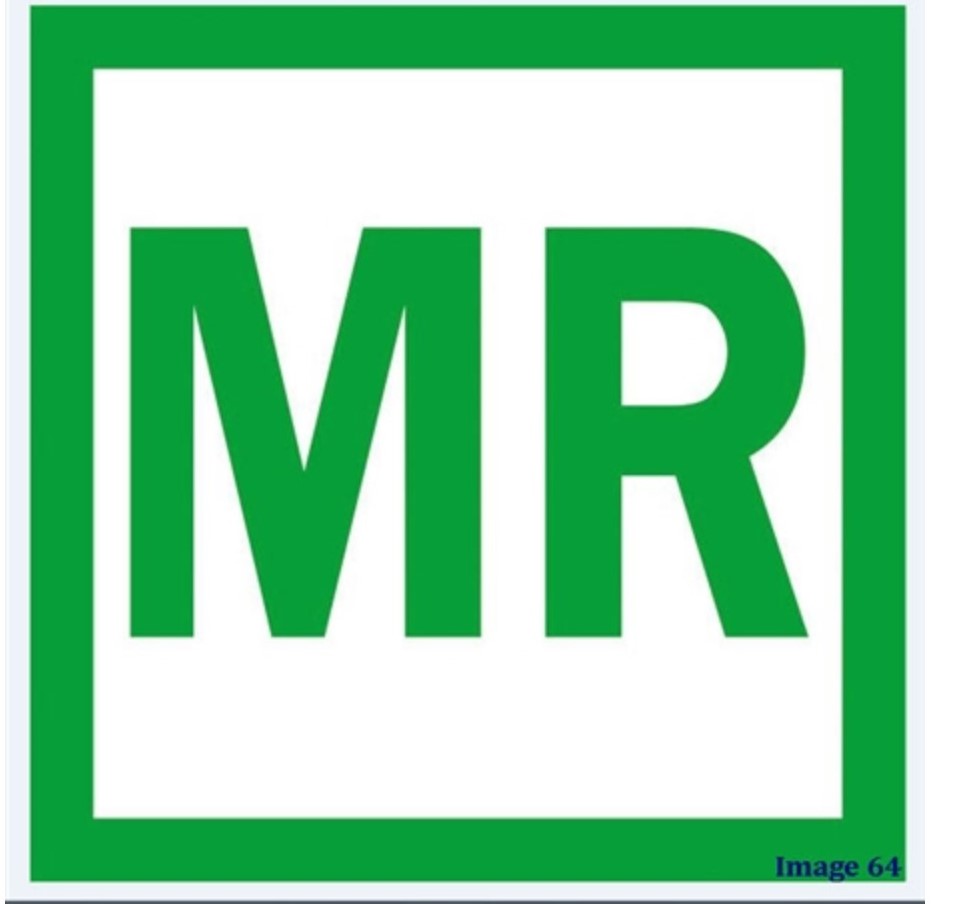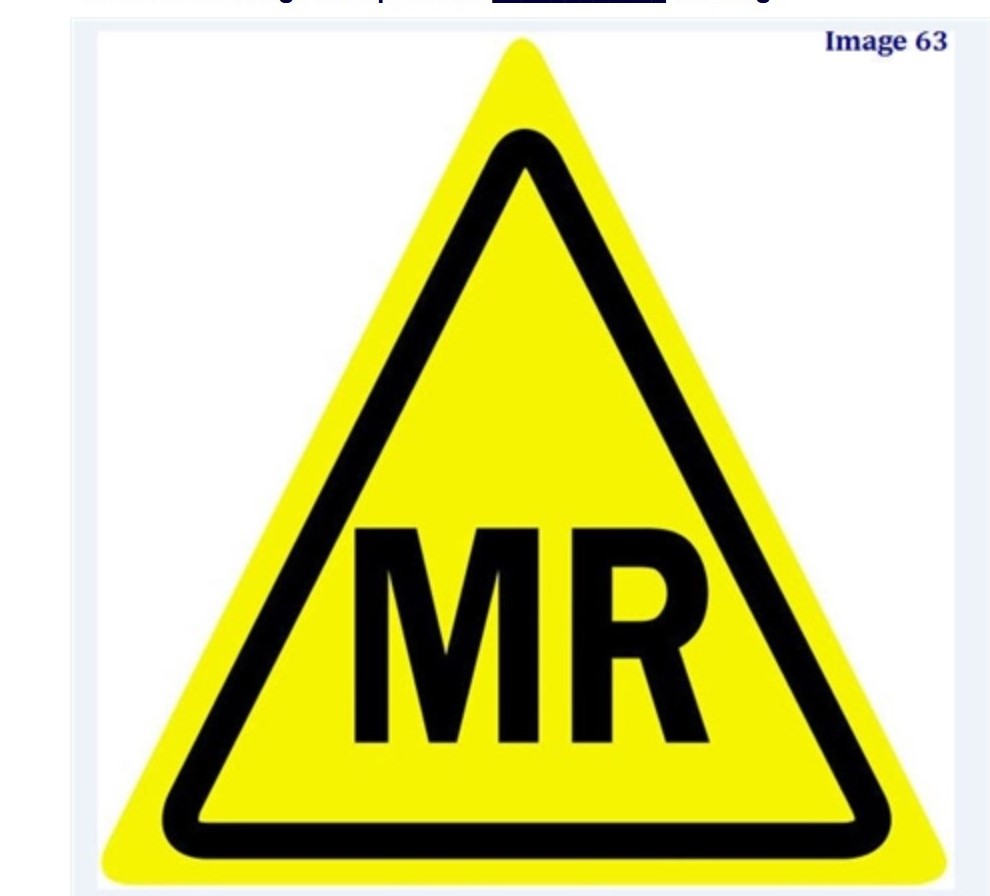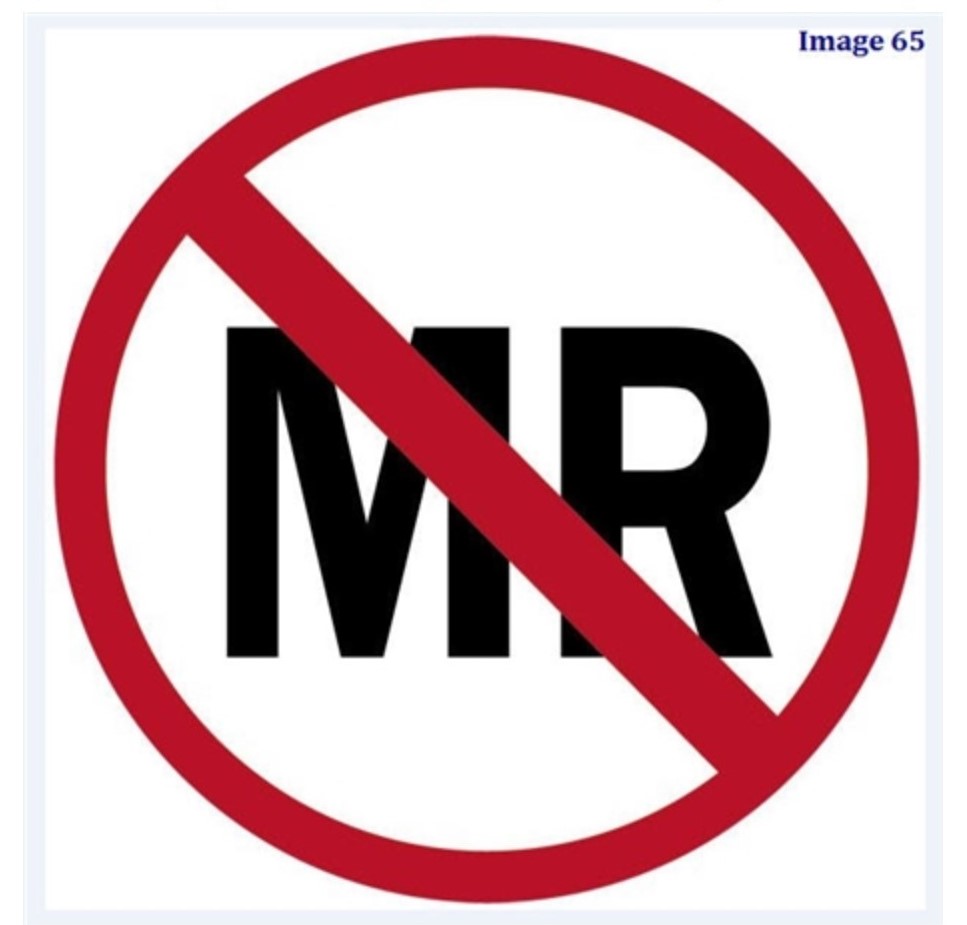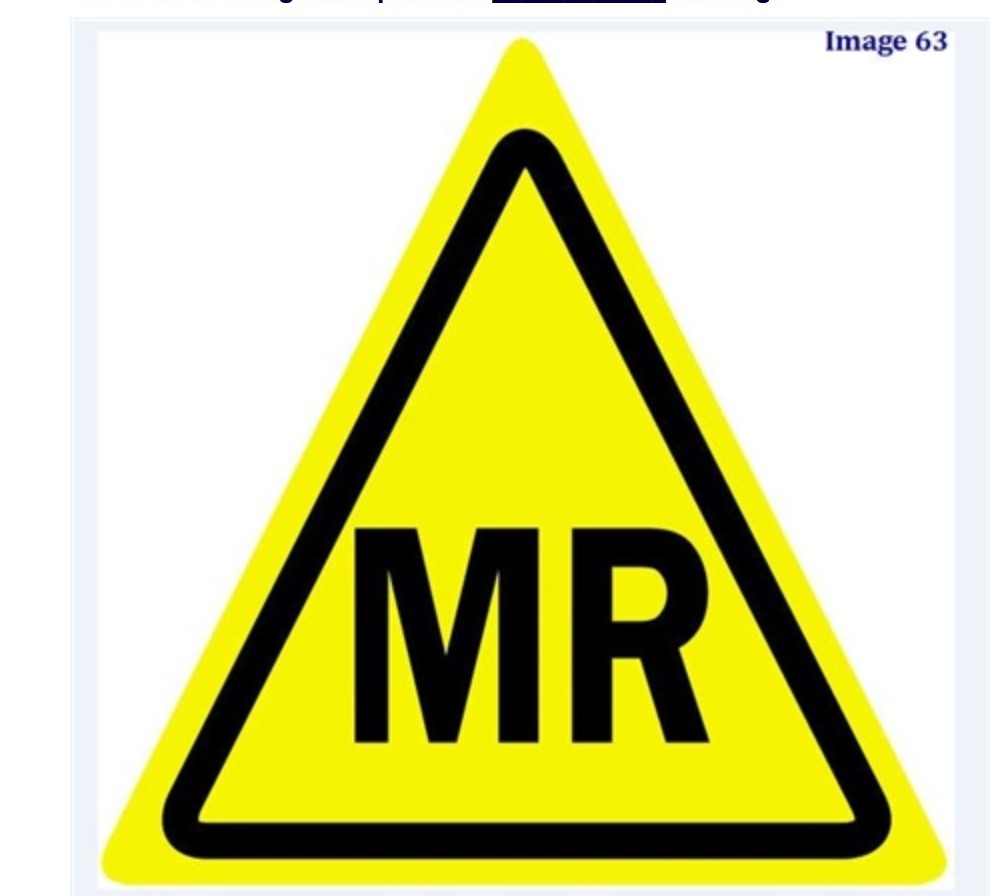mri screening
1/19
Earn XP
Description and Tags
mr pt care
Name | Mastery | Learn | Test | Matching | Spaced |
|---|
No study sessions yet.
20 Terms
The general public is limited to a magnetic field of:
A.1 Gauss
B. 5 Gauss
C. 10 Gauss
D. 1 Tesla
B. 5 Gauss

Image 64 represents __________ labeling.
A. MR unsafe
B. MR safe
C. MR compatible
D. MR conditional
B. MR safe

A patient with an implant label seen in Image 65 would require:
A. No restrictions on MR imaging approach
B. Strict manufacturer guidelines be followed (field strength, scan parameters, duration) to ensure patient safety
C. A different imaging modality be used as the implant is unable to enter the magnetic field
D. The patient to be placed in an Open MRI only
C. A different imaging modality be used as the implant is unable to enter the magnetic field
Patients with suspected intra-ocular metallic foreign bodies must be screened for metal prior to entering the MR scan room. This can be accomplished by: |
A. Waving a horseshoe magnet over the retina |
C. Taking Xrays of the orbital region and obtaining documented radiologist clearance
Which of the following should be educated about static magnetic fields and their effects? |
A. Anesthesiologists administering conscious sedation |
E. All of the above
Patient screening in the MR environment should occur ________. |
A. When the patient fills out most of the questionnaire |
C. More than once, by trained professional(s)
Which of the following is exempt from basic MR screening procedures? |
A. Radiologists |
F. None of the above

A patient with an implant label seen in Image 64 would require:
A. No restrictions on MR imaging approach
B. Strict manufacturer guidelines be followed (field strength, scan parameters, duration) to ensure patient safety
C. A different imaging modality be used as the implant is unable to enter the magnetic field
D. The patient to be placed in an Open MRI only
A. No restrictions on MR imaging approach

Image 63 represents ____________ labeling.
A. MR unsafe
B. MR safe
C. MR compatible
D. MR conditional
A. MR unsafe
What is the objective to screening the patient before an MRI exam? |
A. Obtain pertinent medical history |
D. All of the above
_____________ is the most important aspect of providing a safe MR environment. |
A. Education |
A. Education
Patients with tattooed eyeliner or other ferrous pigment eye region cosmetics should be advised of what possible complication during the MR exam? |
A. Temporary discoloration of the eyeliner/makeup |
C. Temporary skin irritation or swelling of the eyes or surrounding tissues

Image 65 represents ______________ labeling.
A. MR unsafe
B. MR safe
C. MR compatible
D. MR conditional
A. MR unsafe
When moving blood enters a magnetic field, an effect on the ECG seen as a "T wave swelling" or spike occurs, also known as: |
A. Hypertensive effect |
B. Magnetohydrodynamic effect
Before being granted entry into an MRI environment, a patient should be screened for: |
A. Pregnancy |
E. All of the above
Visitors and site employees entering the MR scan room with the patient ____________. |
A. MUST be shielded with lead aprons while the magnet is scanning |
D. should be carefully screened for metal in the same manner as the patient
The effects of time varying magnetic fields can include all of the following EXCEPT: |
A. Peripheral nerve stimulation |
D. Warmth and/or increase in body temperature

A patient with an implant label seen in Image 63 would require:
. No restrictions on MR imaging approach
B. Strict manufacturer guidelines be followed (field strength, scan parameters, duration) to ensure patient safety
C. A different imaging modality be used as the implant is unable to enter the magnetic field
D. The patient to be placed in an Open MRI only
B. Strict manufacturer guidelines be followed (field strength, scan parameters, duration) to ensure patient safety
Patients in need of MRI IV gadolinium contrast should first have their glomerular filtration rate (GFR) checked if they: |
A. Have a history of renal disease |
D. All of the above
Which of the following implants would be considered acceptable for an MRI scan at 1.5Tesla? |
A. Swan Ganz catheters |
D. Heart valves